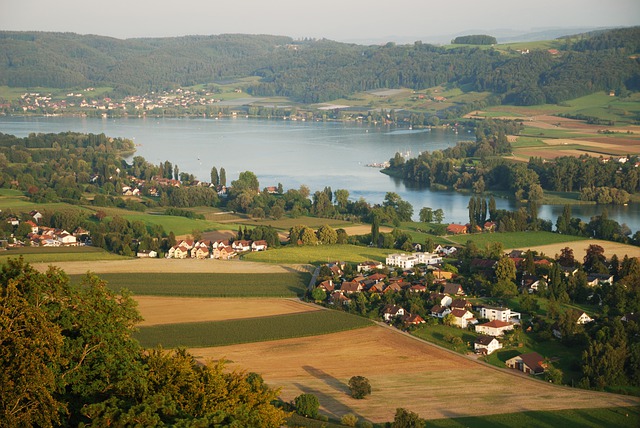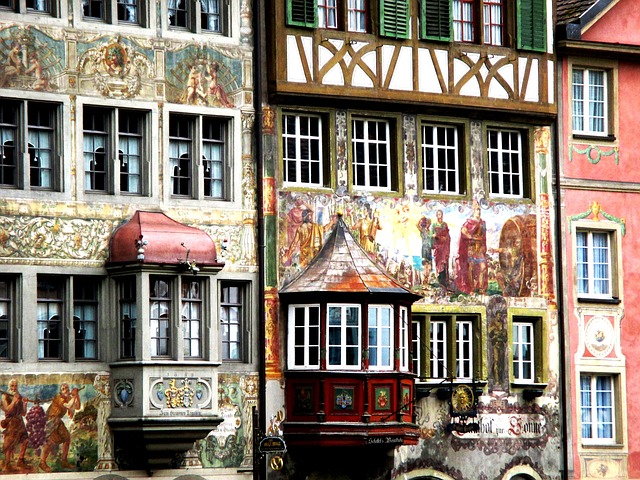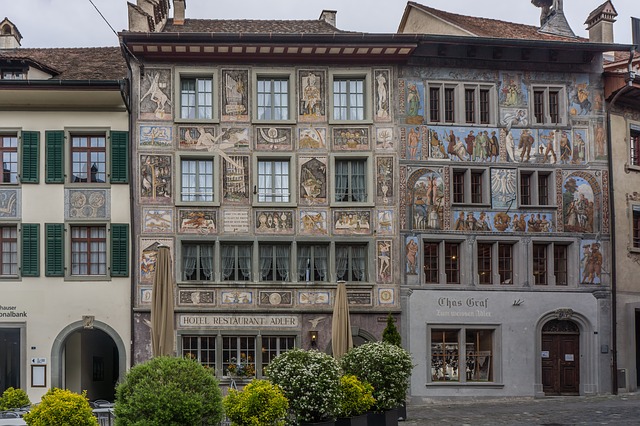Switzerland is a rather small state. Nevertheless, it offers numerous sights worth discovering. Today, we will introduce you to a marvelous treasure, located on the banks of the Rhine and well guarded by the local community.
By Alessandra Ivaldi / 13.10.2020
The first article of our short series on the ‘Marvels of Switzerland’ lead us to Schaffhausen. There, we admired the old town and the banks of the Rhine, including the spectacular Rhine Falls, where the power of nature amazes even the least sensitive visitor. Around 20 minutes from Schaffhausen, there is a village where a very valuable treasure is hidden. It is accessible by car or public transport. The village is called Stein am Rhein, and is the meeting place of Lake Constance (Bodensee) and the Rhine. In 1972, it received the Wakkerpreis (Wakker Prize), a prize awarded the Swiss Heritage Society awards yearly to a Swiss municipality that is committed to the preservation and development of its architectural heritage. Stein am Rhein was the first municipality to be awarded this prize. Certainly, no other town would deserve this prize more than this wonderful, medieval village. The village’s old town will leave you speechless. Despite its limited dimensions – you can explore Stein am Rhein on foot in a short time – it would be easy to spend a whole day among the old town’s buildings and admire the details of their facades. Even if you were to explore the old town again the following day, you would still find some new and surprising details! The buildings are unique. It seems as though the magnificent frescoes, with their beautifully decorated and colour facades, can lead visitors into a fabulous world, far away from the chaos of everyday life.

There is no common thread linking the stories represented by the frescoes on those buildings; each building is a universe in itself. The names of the different buildings are taken from the decorations characterising them. The House of the Sun, for example, was named after the legend on its walls, where you can see Alexander the great and Diogenes, the philosopher. In the fresco, they are illuminated by the long rays of a sun with a human face looking at both of them.
Legend has it that the great leader wanted to pay tribute to the famous philosopher, and offered to grant Diogenes a wish. As an extreme example of his commitment to self-control and self-sufficiency, Diogenes lived in a barrel. Thus, in order to talk to him, Alexander had to enter the barrel. In doing so, he covered the sun’s rays, which were illuminating the philosopher’s ‘house’, with his body. Thus, Diogenes used his wish to ask Alexander, the mighty king, to ‘move away from his light’.

Another remarkable building is the ‘Haus zum roten Ochsen’ (House of the red Ox). Of course, the name of one of the oldest taverns in Switzerland derives from the animal, which can be found below the numerous details on the walls of this building.
If you have the opportunity to visit Stein am Rhein, you can admire the oldest fresco in Switzerland. You can recognise it by the white eagle depicted on it. Not surprisingly, the building is called ‘Haus zum weißen Adler’ (House of the white eagle). The fresco dates from the 1520s and represents images from the stories of the Dekameron by Italian poet Giovanni Boccaccio and from the Gesta Romanorum, a collection of 13th- and 14th – century anecdotes and tales.

The list of sights you are able to admire on a simple walk through the old town of Stein am Rhein is endless. The village did not only win the Wakker Prize because of its beautiful old town. One of its museums, the Museum Lindwurm (the name of a legendary creature of the past, comparable to a dragon), was in fact awarded the title of ‘European Museum of the Year’ in 1995. You can recognise this museum by the dragon figure depicted almost everywhere around the building. The museum depicts 19th-century middle class life.
Another highlight is the Kloster St. Georgen which overlooks the Rhine. It is a Benedictine monastery with a church from the 12th century. Its well-preserved rooms contain a history museum.
Our imaginary journey through North-eastern Switzerland continues: in the next article, we will reach the famous city of Sankt Gallen.



Recent Comments